
HAIs
Latest News



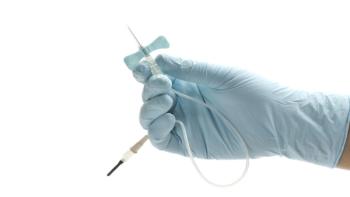
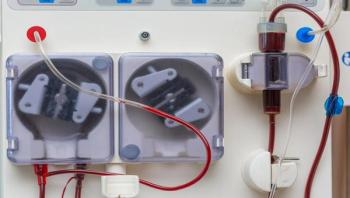
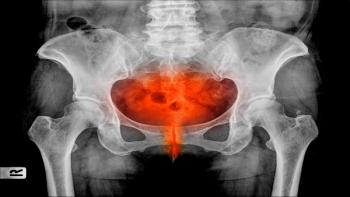
One of the primary ways physicians diagnose urinary tract infections is with a test that detects bacteria in urine. A new enhanced test, developed at Loyola University Chicago, detects significantly more bacteria than the standard test, according to a study presented at a meeting of the American Society for Microbiology in New Orleans.

With the U.S. healthcare reform mandate for increasing transparency and improved quality, the need for infection prevention and control in long-term care facilities (LTCFs) is becoming more critical than ever before for the more than 3 million Americans receiving geriatric care in U.S. annually. Consider these facts regarding infection in long-term care: • An estimated 1.6 million to 3.8 million infections occur in long-term care facilities each year. • More than 1.5 million people live in 16,000 nursing homes in the United States. Estimates suggest infections could result in as many as 380,000 deaths among those residents each year. • The nursing home population is expected to increase to about 5.3 million people by 2030.

Policies relating to newly emerging and highly infectious diseases in outpatient healthcare settings within the context of infection prevention and control are highly variable, according to public health experts, leaving many gaps in patient protection from healthcare-associated infections (HAIs). For example, only a minority of outpatient facilities are certified by the Centers for Medicare and Medicaid Services (CMS) and few are licensed by states or maintain accreditation status. As a result, many of these facilities are opened and operated without being held to minimum safety standards for infection control or other aspects of patient care, potentially putting patients at risk. In an October 2015 document, Outpatient Settings Policy Options for Improving Infection Prevention, the Centers for Disease Control and Prevention (CDC) outlined four key elements for states and their supporting HAI multidisciplinary advisory groups who are interested in more effective and proactive oversight of out-patient facilities: facility licensing/accreditation requirements; provider-level training, licensing and certification; reporting requirements; and establishment and effective application of investigation authorities.
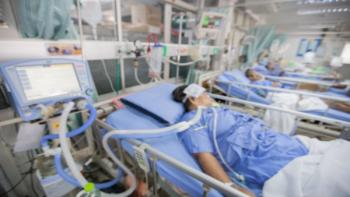
The intensive care unit patient is susceptible to a number of common healthcare-acquired infections, including ventilator-associated pneumonia (VAP), catheter-related bloodstream infections (CLABSIs), catheter-associated urinary tract infections (CAUTIs), and Clostridium difficile infections (CDIs), among others. There are numerous predisposing factors to take into consideration, say Dhillon, et al., who add, "Critically ill patients in the ICU are more likely to have invasive catheters, devices, or undergo surgical treatments that disrupt the skin barrier. Burn victims also develop HAIs as a result of the physical barrier disruption. The ability to clear infections may further be reduced by an underlying chronic diseases, thus increasing the risk of HAI. Other significant risk factors include urinary catheter >10 days, ICU confinement >3 days, presence of intracranial pressure monitor/arterial line/central venous catheter, and shock."

The sterile processing department (SPD) can be one of the more challenging environments in which to uphold infection prevention and control principles. As an example, the decontamination area of the SPD can pose a significant threat to its technicians "because of the numerous and unknown microorganisms that pass through," confirms Nancy Chobin, RN, AAS, ACSP, CSPM, a sterile processing educator and consultant. "In addition, there is the potential for a sharps injury due to sharps that are handled in this area as well such a towel clips, etc.," she says.

The CDC Foundation explains that public health is “the science of protecting and improving the health of families and communities through promotion of healthy lifestyles, research for disease and injury prevention and detection and control of infectious diseases.” It adds that “Public health professionals try to prevent problems from happening or recurring through implementing educational programs, recommending policies, administering services and conducting research – in contrast to clinical professionals like doctors and nurses, who focus primarily on treating individuals after they become sick or injured. Public health also works to limit health disparities. A large part of public health is promoting healthcare equity, quality and accessibility.”

Hospital food service infection control experts have a lot on their plates, as it were, when it comes to ensuring patients’ well-being. That responsibility has not let up in 2016; the Centers for Disease Control and Prevention (CDC) keeps pushing medical institutions to offer healthier fare – think fresh, not prepackaged, salads; Chipotle’s produce-linked food poisoning outbreak lingers in recent memory; and the Zika virus’s entrance into the United States raises questions about its impact on areas including food safety. Each of these issues should reinforce to hospital food infection control experts the need to stay mindful of industry best practices. Doing so will continue to help protect patients, says Marisa Pinchas, MPH, CIC, the infection preventionist at Children’s Hospital Los Angeles.

While not every instance of healthcare-associated infection (HAI) can be pinned on staff hygiene, too many occurrences can be attributed to the very people who are supposed to protect patients. And that is why the reality of insufficient attention to handwashing, PPE donning and doffing, and other areas of infection prevention, remains so baffling. The big question is “why” – why do some staff cut corners when they well know the consequences of not adhering to standard processes for basic hand hygiene and activities such as PPE donning/doffing? The answers vary but often boil down to one simple reality: human nature. People get in a hurry and take the chance that no one is watching them, says Mary Lou Love, MSN, RN, the veteran director of infection control for Doctors Hospital at Renaissance in Edinburg, Texas. For starters, people generally adhere to requirements for a while and then fall back into their old ways. “I think, like anything else, you start off, then get to the point that it is working, and then a couple of months go by,” Love explains. Since infection control – which has limited resources – tends to oversee compliance monitoring on a regular basis people “go back to their habits” without constant enforcement, Love says.

For the purposes of this report, ICT conducted an online survey in which several hundred infection preventionists shared their insights on key issues such as workload, present and future challenges, as well as program needs and areas for improvement. When we asked respondents how they felt about the future of their profession overall, 56 percent said they were excited and optimistic about what can be accomplished, 28 percent said they were feeling neutral and withholding judgment for now, and 16 percent said they felt cautious and/or pessimistic in the face of continued change within the profession and healthcare in general. Eighty-five percent of surveyed IPs say they are confident in their compe-tency as an infection preventionist, while 5 percent were not and 10 percent were unsure. And in terms of enjoying their work, 91 percent of IPs said they were happy in their jobs, while 4 percent said they did not relish their tasks and 6 percent were ambivalent.
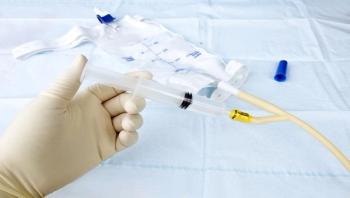





The quest to make a hospital an infection-free environment seems never-ending. That’s especially the case as new antibiotic-resistant bugs crop up and as staph and sepsis continue to risk patient lives. The responsibility for addressing these problems does not rest solely on infection preventionists, of course, but there are measures these healthcare professionals can and should implement to better ensure a highly functioning safety of culture.


A hospital's surgical services department represents one of the most sizable challenges to infection prevention and control. Surgery also presents a significant risk to patients, and together, the operating room should be on the infection preventionist's radar for healthcare-associated infection (HAI) mitigation and elimination. Research indicates that SSIs are the most common type of hospital-acquired infection. SSIs account for 20 percent of all infections that occur in the hospital setting. Although most patients recover from an SSI without any long-term consequences, they are at a two- to 11-fold increased risk of mortality. Furthermore, SSIs are the most costly of all hospital-acquired infections. With an annual estimated overall cost of $3 billion to $5 billion in the U.S., SSIs are associated with a nearly 10-day increased length of stay and an increase of $20,000 in the cost of hospitalization per admission. As many as 60 percent of SSIs are considered to be preventable. Now that the Centers for Medicare and Medicaid Services no longer pays additional amounts for the cost of treating conditions acquired in a hospital, SSIs have been targeted not only to improve clinical quality, but also to protect hospital reimbursement.






